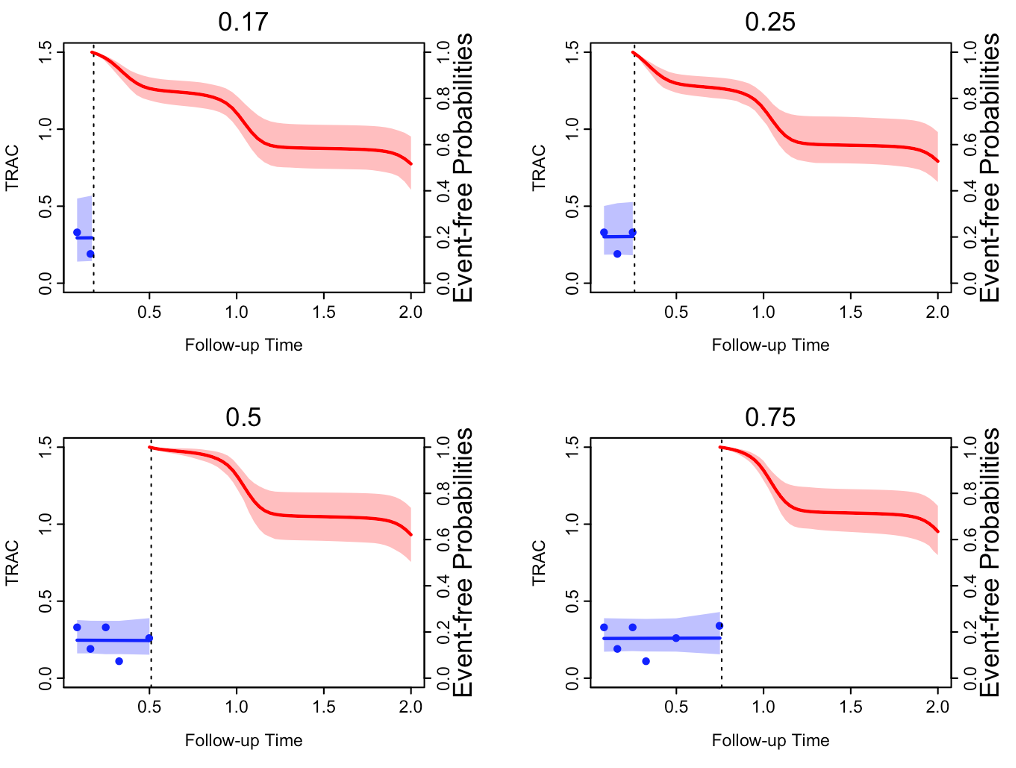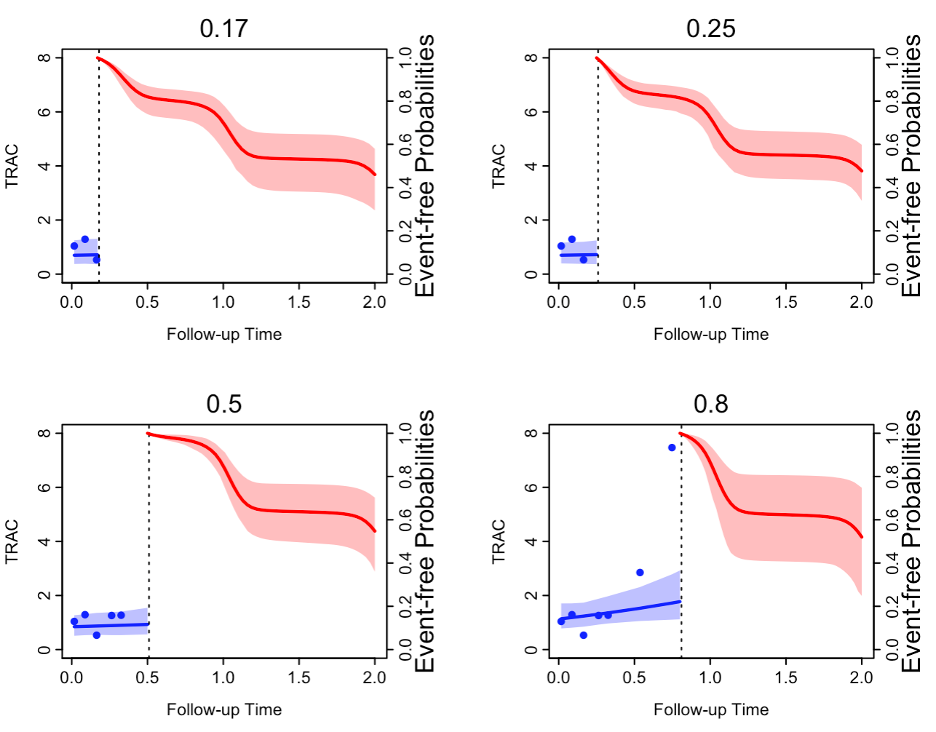Dynamic kidney rejection risk prediction using serial donor derived cell free DNA
Kexin Guo1, Lihui Zhao1, Steven Kleiboeker2, John Friedewald1.
1Comprehensive Transplant Center, Northwestern University, Chicago, IL, United States; 2Clinical Diagnostics, Eurofins Viracor, Lees Summit, MO, United States
Background: Donor-derived cell free DNA (ddcfDNA) has evolved as a non-invasive biomarker for monitoring kidney transplant patients for rejection. Trends in ddcfDNA over time may help predict important outcomes for the allograft. We examined samples from subjects enrolled in the CTOT08 clinical trial (NCT01289717) to determine the ability of joint modeling to dynamically predict rejection episodes (clinical and subclinical) in kidney transplant recipients.
Methods: Serial blood samples collected in the first two years post-transplant were analyzed for ddcfDNA using the TRAC test (Eurofins – Viracor, Lees Summit, MO). We used the joint modeling method to model the trend of serial ddcfDNA scores to predict the 2-year rejection-free probability. We pre-defined 4 time points post-transplant and dynamically plotted two illustrative patient’s 2-year event-free probability via the joint modeling method.
Results: The figures depicting the predicted event-free probability are presented as below. The two patients have very similar predicted 2-year event-free probability based on their serial TRAC score up to 0.17-years post transplant. Moving forward in time, the predicted probability starts to diverge for these two patients. One patient has stable ddcfDNA scores below 0.5% up to year 0.75. The patient’s predicted 2-year event-free probability increases over time. At 0.5-year post transplant, the predicted event-free probability is 0.621 [0.503, 0.737]. 
While for the other patient, their ddcfDNA score is relatively high and continues to increase. The second patient has a lower 2-year event-free probability. At 0.5-year post transplant, the predicted event-free probability is 0.548 [0.360, 0.702]. The second patient went on to have a rejection episode at 0.86 months post-transplant.

Discussion: Plasma ddcfDNA is evolving as both a diagnostic and a prognostic biomarker in the management of kidney transplant recipients. Using joint modeling, we were able to develop a dynamic risk prediction model for future rejection episodes in patients. Future applications include further validation and eventually defined interventions such as immunosuppression titration to reduce the risk of future rejection episodes.

right-click to download
